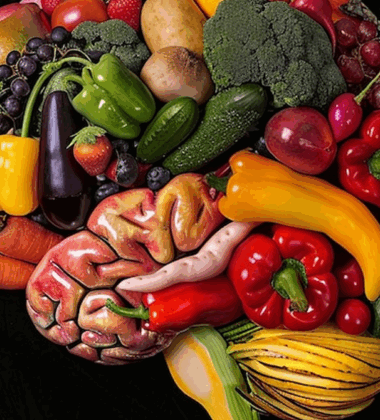Flavor may be the first thing consumers notice, but mouthfeel is often what seals the deal. From the creaminess of a plant-based yogurt to the crunch of a high-protein snack, texture engineering is quickly emerging as the secret weapon behind next-generation food products. At this year’s Food and Beverage Expo USA, texture innovation was front and center—not just as a functional necessity, but as a new frontier for differentiation and brand loyalty.
In this deep dive, we explore why texture matters more than ever, how ingredient suppliers are responding, and what tools food technologists are using to elevate sensory satisfaction from concept to shelf.
Why Texture Is Taking Center Stage
In an increasingly saturated market, flavor alone is no longer enough. Today’s consumers are seeking multisensory experiences that reflect both culinary creativity and scientific precision. Texture is becoming a primary driver of:
- Product perception (e.g., creamy = indulgent, crunchy = fresh)
- Satiety and satisfaction (how a product feels affects how full it makes you feel)
- Emotional response (comfort, excitement, nostalgia)
According to a 2025 survey by Food Insights Lab, over 65% of consumers say they would stop buying a product if the texture was inconsistent, even if the flavor remained the same.
Texture Engineering Defined
Texture engineering is the deliberate manipulation of a food product’s physical properties to create a desired mouthfeel. This process often combines culinary technique with advanced food science, including:
- Hydrocolloid systems (gums, starches, pectins)
- Protein matrix structuring
- Fat mimetics and emulsifiers
- Controlled aeration and crystallization
At the Food and Beverage Expo USA, texture isn’t just a byproduct—it’s a designed feature, often developed in tandem with flavor and aroma.
Real-World Examples from the Expo Floor
1. Crunch-Controlled Plant Chips
A startup showcased chickpea and quinoa crisps that deliver a high-decibel crunch without breaking down too fast. Their secret? A starch blend modified for controlled fracturability—a balance between rigidity and snap.
2. Whipped Oat Creamers
A dairy-free creamer brand wowed visitors with a texture nearly indistinguishable from full-fat cream. This was achieved using a hydrocolloid-stabilized emulsion that resists phase separation even at high brew temperatures.
3. Dual-Layer Protein Bars
A functional food company introduced a two-layer protein bar with a chewy core and crunchy outer shell. The texture contrast was intentionally designed using differential protein denaturation during the heating process.
The Science Behind Mouthfeel
To effectively engineer texture, product developers need to understand how human physiology and neurology process mouthfeel. Key mechanisms include:
- Mechanoreceptors that detect hardness, crunch, and viscosity
- Salivary interactions that affect perception of creaminess or dryness
- Thermal sensitivity that influences how fats and gels behave on the tongue
Texture is not just tactile—it’s chemical, thermal, and even auditory. The sound of a bite (e.g., the snap of a cracker) plays a significant role in perceived freshness and quality.
Tools and Technologies Advancing Texture R&D
Modern food labs are no longer relying solely on trial and error. Today’s texture engineering tools include:
- Texture Analyzers – Precision instruments that measure hardness, chewiness, cohesiveness, and fracturability.
- Rheometers – Tools used to study viscosity and viscoelastic properties of liquids and gels.
- Sensory Panels with AI-Assisted Feedback – Integrated systems that collect real-time sensory data and translate it into quantifiable texture preferences.
- 3D Food Printing – Technology that enables layer-by-layer construction of texture profiles for custom applications.
Ingredient suppliers are also developing texture toolkits that allow developers to prototype multiple texture types from the same base formula.
The Role of Hydrocolloids in Texture Engineering
Hydrocolloids—such as xanthan gum, agar, guar, carrageenan, and modified starches—are among the most versatile tools in a food technologist’s arsenal. At the Food and Beverage Expo USA, several ingredient manufacturers debuted hydrocolloid blends that respond predictably to:
- pH changes
- Temperature shifts
- Shear stress during processing
By leveraging these properties, R&D teams can fine-tune mouthfeel across various food types, including:
- Frozen desserts (scoopability, melt resistance)
- Sauces and soups (spoon cling, creaminess)
- Bakery fillings (gel strength, spreadability)
Texture Trends to Watch in 2025 and Beyond
1. Customizable Texture Profiles
Brands are beginning to offer consumers the ability to choose texture “levels” for certain products, such as extra-crunchy, lightly aerated, or ultra-smooth. This trend is gaining traction in both functional beverages and packaged snacks.
2. Multisensory Textures
Products are being designed to combine contrast textures in a single bite—for example, liquid-filled confections that burst within a crunchy shell or yogurts with alternating creamy and granular layers.
3. Texture for Accessibility
Food developers are focusing more on designing textures for specific populations, such as seniors (easy to chew and swallow) or children (engaging, safe textures with minimal choking hazard).
4. Climate-Conscious Texture Innovation
With climate change affecting crop consistency, texture engineers are being challenged to develop drought-resilient ingredient substitutes that mimic the mouthfeel of traditional ingredients—like using cactus-derived gums in place of guar gum.
Challenges Facing Texture Innovation
While the opportunities are vast, texture innovation isn’t without its difficulties. Key challenges include:
- Shelf Stability: Ensuring the engineered texture holds up over time and under variable storage conditions.
- Label Simplicity vs. Complexity: Complex texture systems can require multiple functional ingredients, potentially compromising a clean label.
- Consumer Expectation: If a texture is too unfamiliar, it can lead to rejection—even if it’s scientifically superior.
- Manufacturing Scalability: Some lab-designed textures don’t perform the same at industrial scale, making transition to production challenging.
To overcome these hurdles, cross-disciplinary collaboration is essential—bringing together culinary insight, engineering precision, and consumer research.
Strategic Takeaways for Food Technologists and Suppliers
- Treat Texture as a Feature, Not a Fix
Start with texture in the concept phase. Don’t wait to “fix” mouthfeel after flavor is finalized. - Design for the Emotion
Texture evokes feelings. Crunch can excite, creaminess can comfort. Use these associations strategically in product positioning. - Leverage Supplier Expertise
Ingredient manufacturers are investing heavily in R&D. Use their pilot data, prototype libraries, and lab services to reduce development time. - Pilot Test Across Demographics
Different populations perceive texture differently. Conduct texture mapping for your primary audience, whether it’s children, athletes, or older adults. - Integrate Tech Tools
Use data from rheometers, sensory panels, and AI modeling to validate your texture assumptions before going to market.
Final Thoughts
As showcased at the Food and Beverage Expo USA, texture engineering is no longer a luxury—it’s a core capability for brands seeking to stand out in a hyper-competitive market. From snacks to supplements, frozen foods to beverages, mouthfeel has become one of the most powerful levers in product success.
For ingredient suppliers and R&D teams alike, this is a moment of opportunity. The brands that understand the art and science of texture—and build it into their innovation pipelines—will be the ones leading the next wave of food and beverage excellence.





